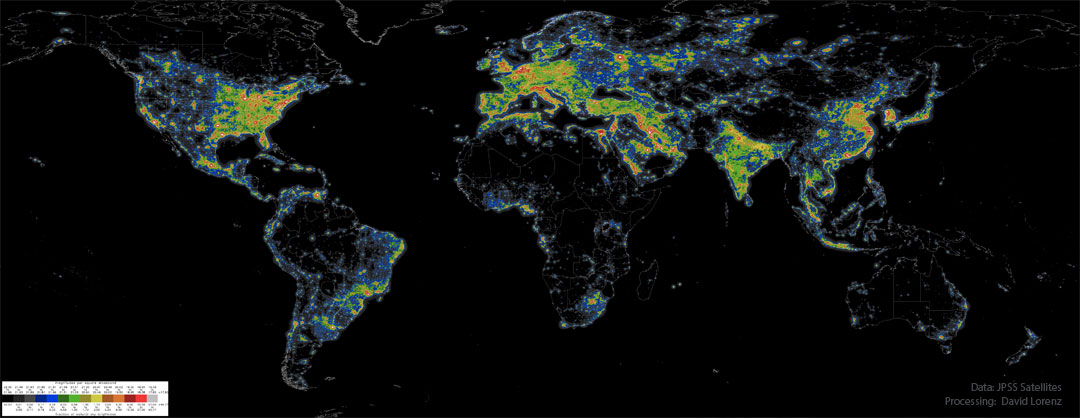2023年3月8日
Artificial Night Sky Brightness
Image Credit: Data: JPSS Satellites; Processing: David J. Lorenz
Explanation: Where have all the dim stars gone? From many places on the Earth including major cities, the night sky has been reduced from a fascinating display of thousands of stars to a diffuse glow through which only a few stars are visible. The featured map indicates the relative amount of light pollution that occurs across the Earth. The cause of the pollution is artificial light reflecting off molecules and aerosols in the atmosphere. Parts of the Eastern United States and Western Europe colored red, for example, have an artificial night sky glow over ten times that of the natural sky. In any area marked orange or red, the central band of our Milky Way Galaxy is no longer visible. The International Dark Sky Association suggests common types of fixtures that provide relatively little amounts of light pollution.
Light Up Your Internal Night Sky: Random APOD Generator
Tomorrow’s picture: planetary defense
人为的夜空亮度
图像提供: 数据: JPSS Satellites;图像处理: David J. Lorenz
说明: 昏暗的恒星都上那里去了?地球上包括大都市在内的许多地方,夜空已经从有数千颗星星争辉的舞台,变成了只有寥寥数颗星冒头的弥漫光幕。这张主题图,呈现了地球各地的光污染之相对量。造成污染的源头,则是从大气分子和气溶胶反射的人造光。例如:美国东部和西欧的部分地区呈红色,这些区域的人为夜空辉光之亮度是自然天空的10倍以上。而在任何以橙色或红色标示的区域,我们银河系的中央盘面已不再可见。为此,国际暗空协会建议使用这些可造成较少光污染的常见灯具。
点亮你内心的夜空: 随机APOD生成器
明日的图片: planetary defense



